Typical applications of positioning systems in the Internet of Things
Currently, medical staff in hospitals are facing tremendous work pressure, especially the shortage of medical staff during the pandemic, which affects their work enthusiasm and confidence.
At the same time, medical staff undertake a lot of non-clinical tasks in their daily work. How to improve the patient care process and increase employee satisfaction is an important issue for hospital management. The use of IoT positioning technology can optimize clinical workflow. Monitoring, predicting, and optimizing the workflow of medical staff through technical means can save corporate costs and improve the satisfaction of patients and medical staff.
indoor positioning system
The current market demand for positioning is increasing, so various positioning technologies have been derived, which are divided into different positioning systems according to different positioning signals. Such as GPS using satellite wireless RF signals, optical positioning using infrared and laser, sound positioning using ultrasound and sonar, visual positioning using image processing and computer vision, relative positioning using gyroscopic principles, etc.

Ultra-Wideband Technology (UWB)
UWB ultra-wideband technology is a new wireless communication technology that is greatly different from traditional communication technology. It does not require the use of carrier waves in the traditional communication system but transmits data by sending and receiving extremely narrow pulses with nanoseconds or less, thus having a bandwidth of 3.1~10.6GHz.
UWB technology is a wireless technology with a high transmission rate (up to more than 1000Mbps), low transmission power, and strong penetration ability and is based on extremely narrow pulses without carrier waves. It is these advantages that enable it to obtain more accurate results in the field of indoor positioning.
UWB indoor positioning technology often uses TDOA to demonstrate the ranging positioning algorithm, which is based on the time difference of signal arrival and positioning through hyperbola intersection. Ultra-wideband systems include radio systems that generate, transmit, receive, and process extremely narrow pulse signals. The ultra-wideband indoor positioning system includes UWB receivers, UWB reference tags, and active UWB tags.
During the positioning process, the UWB receiver receives the UWB signal emitted by the tag, and by filtering various noise interference contained in the electromagnetic wave transmission process, a signal containing effective information is obtained, and then the central processing unit performs ranging and positioning calculation and analysis.
There are many base stations (anchors) arranged indoors, and the distance between the tag and each base station can be obtained. Based on these measured distances, the tag can be positioned, similar to the GPS principle. If we combine inertial sensors and appropriate algorithms, we can obtain more accurate positioning information relative to the base station (Anchor).
The impact of location technology on healthcare
Digitally visualize medical staff and movable materials in healthcare, such as patient movement trajectories, the status of healthcare equipment, and work interactions between employees, and connect everyone and every important material through real-time and reliable IoT technology. , this visibility is achieved through IoT-enabled positioning technology, positioning cards, and NFC tags in hospitals.
With the application of smart technology, hospital healthcare systems can reduce costs and improve efficiency, better help medical staff, and improve patient satisfaction, while allowing the entire medical team to work smarter. At the same time, medical institutions can use advanced IoT positioning technology to obtain the real-time location of important equipment and the precise locations of patients and medical staff to optimize management, optimize processes, and respond quickly.

Artificial intelligence, machine learning (ML), and the Internet of Things are enhancing the data analysis capabilities provided by location technology, which in turn helps to better understand and optimize workflows, thereby improving productivity and patient care. Healthcare organizations around the world are leveraging these technologies to build the smart hospitals of the future and continue to provide patient and healthcare staff satisfaction and confidence.
Application of positioning technology in clinical work in hospitals
The implementation of the positioning system in the hospital allows the hospital to visualize the medical care and find the best way to optimize the work process through data analysis of the information. For example, by using monitoring methods to allocate sufficient staff to the department according to the busiest time of the day, medical Healthcare providers have access to software platforms that automate workflows to reduce unnecessary work hours on handwritten documents and the opportunity for recording errors.
Utilizes custom algorithms to prioritize all tasks related to patient care, patient transportation, patient treatment, and hospitalization management by allocating 100% of human resources to critical operations during peak hours and allocating administrative tasks to off-peak hours Improve efficiency. Through these measures, both patient satisfaction and employee engagement can be greatly improved.
By using IoT location-enabled badges or signage cards assigned at patient check-in, advanced workflow platforms can provide detailed information by providing proactive status updates, estimated wait times, SMS alerts, and real-time dynamic display of employee location on the dashboard. patient trajectory map. For example, as a patient is wheeled out of the operating room and transferred to the ward recovery area, staff can see in real-time and begin preparing the operating room for the next patient. This ensures teams are on the same page with up-to-date, consistent information and can eliminate workflow headaches.
IoT for asset management
One-third of nurses reported spending at least an hour during an average shift searching for equipment, resulting in lost patient care time. This is where asset tracking comes in, by leveraging smart tags powered by IoT location technology, the platform system provides real-time room and precise information, lists medical equipment locations and detailed equipment usage, and provides equipment maintenance and cleaning alerts. Once an asset management tag is placed on the necessary equipment, staff can view the precise location of the equipment within seconds. Ensuring that medical monitoring equipment is adequate and located promptly is critical for both medical staff and patients. Automating inventory management with regular replenishment helps ensure there is always enough stock available at all times. By automatically monitoring inventory levels, inventory managers can accurately predict inventory utilization, reduce labor inventory, and ensure a continuous and stable supply of medical equipment in hospitals.
IoT for staff and patient safety
Accidents or violent incidents may occur at any time to patients or medical staff in the hospital. By using badges, tags, or radio frequency cards that support IoT positioning technology, when there is an accident or danger, just click the button on the badge to trigger the trigger discreetly. Real-time alarm notifications to share employees’ precise locations. This ensures that security personnel can provide assistance as quickly as possible. Real-time location positioning, instant alerts, and location updates create a safe environment for medical staff and patients, improving hospital service levels.
write at the end
With the application of the Internet of Things and positioning technology in hospital scenarios, ideal progress has been made in using positioning technology to optimize clinical and operational aspects. A comprehensive set of intelligent location technology solutions can enhance the scalability of the technology, making it easier to expand enterprise-wide and further improve operations over time. For many healthcare facility managers, asset management is just what they use The beginning of digital transformation with real-time positioning systems.
More Application-Related Electronic Components
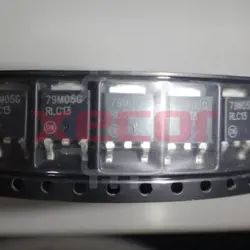
MC79M05CDTRKG
Linear regulators with negative feedback designed to provide a constant 5V output at a maximum current of 500mA

KSZ8895MQXIA
High-speed networking switch
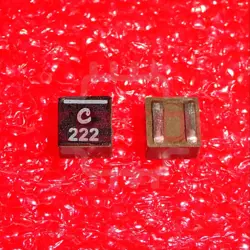
XGL4030-222MEC
2.2uH ±20% 7A 1616 Power Inductors ROHS
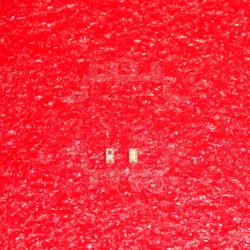
0900LP15B0063E
Ceramic Filters Low Pass 900MHz 0.9dB 50Ohm SMD 8Pin T/R
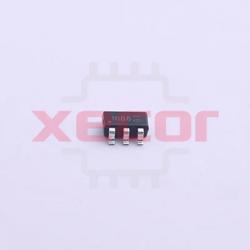
ZXMN10B08E6TA
ZXMN10B08E6TA is a N Channel MOSFET, featuring a voltage rating of 100V and a maximum current of 1.6A, with a low on-resistance of 230mΩ at 10V

ZXMN6A07FTA
Small Signal Field-Effect Transistor
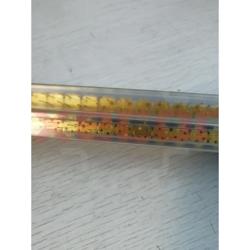
MLX90614ESF-DCI-000-TU
Digital Temperature Sensor MLX90614ESF-DCI-000-TU, Operating Range: -40°C to 85°C, TO39 Enclosure
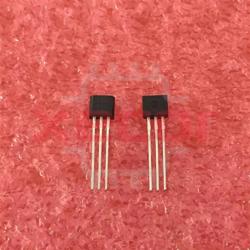
ZVN2106A
channel MOSFET with a voltage rating of 60V, current rating of 0.45A, and power dissipation of 0.7W, packaged in TO92
READ ALSO
-
How IoT solutions can help OEMs reduce costs in the aerospace industry Date: 04/10/2023
The potential of the Internet of Things in the aviation industry is endless. By effectively leveraging IoT, the aviation industry can focus on improving passenger safety, cost reduction, system maintenance, efficiency, safety, and customer experience.
-
How IoT is changing the healthcare industry Date: 04/10/2023
The adoption of the Internet of Things (IoT) has revolutionized the way the healthcare industry now works, as it has huge potential and multiple applications, from remote monitoring to medical device integration. In healthcare, IoT is used for interconnected medical devices like monitoring systems, sensor machines, and detectors that capture real-time health information and store it on centralized cloud/servers for later analysis to obtain Better healthcare services. All the big players in the i
-
IoT application processor chips and camera chips Date: 04/10/2023
In recent years, artificial intelligence technology and Internet of Things technology have gradually integrated and developed. Massive data is generated and collected through the Internet of Things and stored in device terminals, edges, and clouds. The data is then intelligently analyzed through machine learning, ultimately realizing the intelligent connection of all things data action, AIoT emerged as the times required. As the core component of AIoT equipment, the importance of chips has becom
